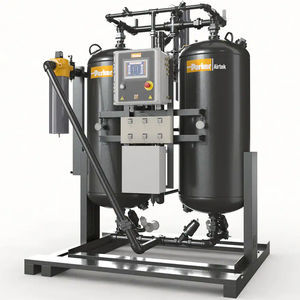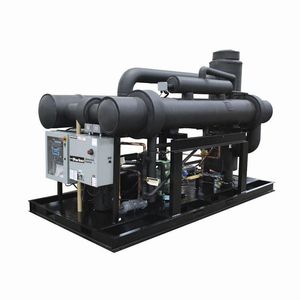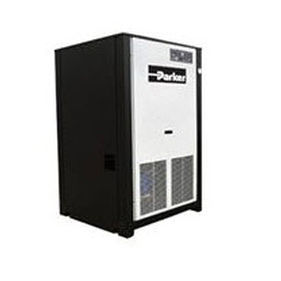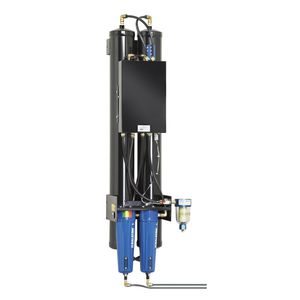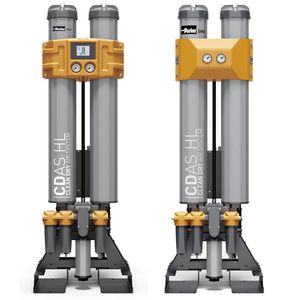
- Industrial machines and equipment
- Furnace and Heat Treatments
- Desiccant compressed air dryer
- Parker Industrial Gas Filtration and Generation Di
- Products
- Catalogs
- News & Trends
- Exhibitions
Heatless desiccant compressed air dryer TW series


Add to favorites
Compare this product
Characteristics
- Technology
- heatless desiccant
- Capacity
Min.: 17 m³/h
(600.35 ft³/h)Max.: 10,194.06 m³/h
(359,999.83 ft³/h)- Working pressure
Min.: 80 psi
Max.: 150 psi
- Operating temperature
Min.: 50 °F
(10 °C)Max.: 120 °F
(48.9 °C)- Ambient temperature
Min.: 40 °F
(4.4 °C)Max.: 120 °F
(48.9 °C)- Weight
190 lb
(86.2 kg)- Dew point
-40 °F
(-40 °C)
Description
Parker Airtek TW Series Heatless Twin Tower Desiccant Air Dryers remove contaminants in compressed air systems using Pressure Swing Adsorption (PSA) technology. Pressure dewpoint of -40°F (-40°C) and flowrate of 10 - 6000 scfm depending on model.
Parker Airtek TW Series Heatless Desiccant Air Dryers remove water vapor from compressed air through a process known as Pressure Swing Adsorption. A standard pressure dewpoint of -40°F (-40°C) is attained by directing the flow of saturated compressed air over a bed of desiccant.
The most commonly used desiccant is activated alumina, a spherical shaped, hygroscopic material, selected for its consistent size, shape and extreme surface to mass ratio. This physically tough and chemically inert material is contained in two separate but identical pressure vessels commonly referred to as “dual” or “twin” towers.
As the saturated compressed air flows up through the “on line” tower, its moisture content adheres to the surface of the desiccant. The dry compressed air is then discharged from the chamber into the distribution system.
A solid state controller automatically cycles the flow of compressed air between the towers, while the “on line” tower is drying, the “off line” tower is regenerating. Regeneration, sometimes referred to as purging, is the process by which moisture accumulated during the “on line” cycle is stripped away during the “off line” cycle. As dry low pressure purge air flows gently through the regenerating bed, it attracts the moisture that had accumulated on the surface of the desiccant during the drying cycle and exhausts it to the atmosphere.
Catalogs
No catalogs are available for this product.
See all of Parker Industrial Gas Filtration and Generation Di‘s catalogsExhibitions
Meet this supplier at the following exhibition(s):

Other Parker Industrial Gas Filtration and Generation Di products
Compressed Air Dryers
Related Searches
- PARKER compressed air dryer
- PARKER refrigerated compressed air dryer
- Adsorption compressed air dryer
- Compact compressed air dryer
- High-quality compressed air dryer
- Membrane compressed air dryer
- Non-cycling compressed air dryer
- High-temperature compressed air dryer
- Low-pressure compressed air dryer
- Thermal mass compressed air dryer
- Cam compressed air dryer
- Externally heated compressed air dryer
- In-line compressed air dryer
*Prices are pre-tax. They exclude delivery charges and customs duties and do not include additional charges for installation or activation options. Prices are indicative only and may vary by country, with changes to the cost of raw materials and exchange rates.




